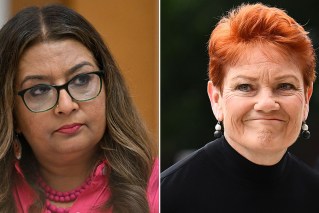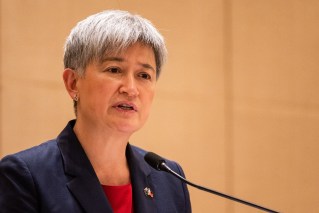Single-parent payment threshold extended in budget

Single parents will be the beneficiaries of a $1.9 billion package to be announced in Tuesday’s federal budget.
The Albanese government has confirmed the budget will raise the cut-off for the parenting payment from when the child turns eight to when they turn 14.
Under changes that will benefit up to 60,000 single parents, they will be eligible to receive $922.10 a fortnight until their youngest turns 14.
“We want to extend the financial safety net for single-parent families by raising the age in which it is cut-off for the youngest child of a single parent for the single parenting payment from eight years to 14 years,” Prime Minister Anthony Albanese said.
“What that will do is to make sure that women, in particular, but also fathers in situations of raising children by themselves, can have that sense of security, that children as well can be looked after, that people can be in a situation whereby they more easily move into employment when they’re able to as well.”
Mr Albanese said he was “proud” to be able to boost financial support for single parents and their children.
Other changes to be announced on Tuesday night will allow for parents to no longer have to transfer to JobSeeker when their youngest child turns eight.
The changes will come into effect from September 20, with eligible single parents on JobSeeker set to get a $176.90 increase in pay per fortnight.
The raise in the age cut-off will cost $1.9 billion to the federal budget through to the 2026/27 financial year.
Mr Albanese said the changes to single-parent payments would bring more stability.
“We want to look after single parents because we know that the role that they play in raising their children is such a priority for them and they’re deserving of more support,” he said.
While the age threshold had been lifted, the women’s equality task force had urged the government to go further and raise it to when the youngest child turns 16.
The threshold was at 16 until changes made by the Howard government reduced it to eight.
Mr Albanese said the age cap of 14 was the right balance.
“Fourteen is a period in which a student starts to gain more independence, doesn’t need the same level of support at home that a younger child does. Eight was far too low,” he said.
“An eight-year-old needs mum or dad or their carer to cook them dinner, to look after them. A 14-year-old starts to … move into that change into adulthood.”
Nationals leader David Littleproud said the changes to payments needed to be examined in relation to the bigger budget picture.
“Obviously, the government’s made it clear they wanted to help those that are on social security payments to keep pace with inflation, even though there are indexed movements on that every six to 12 months,” he told Sky News.
“We’ll look at it in the totality … and understanding who’s paying for it, because invariably it’s going to be regional Australia.”
Social Services Minister Amanda Rishworth said the increase to the age threshold would provide a safety net to single-parent families.
“No parent should have to choose between meeting their children’s needs and their family’s safety or economic security,” she said.
“Reduced opportunities to participate in paid work, coupled with the additional costs associated with raising children, make single parent households more vulnerable to economic insecurity.”
Australian Council of Social Service chief executive Cassandra Goldie welcomed the age limit rise, but said more was needed.
“While today’s announcement is excellent and very welcome news for the 57,000 single parents who will benefit, 860,000 people will remain on JobSeeker, including 28,000 single parents,” she said.
“We need to ensure that everyone – single parents, people with disability, people with chronic illness, people looking for paid work, students, people who are caring – have enough to cover the basics.”
No one ‘left in the lurch
Confirmation of the changes to parenting payments came as Finance Minister Katy Gallagher said no one would be left in the lurch despite the government announcing billions in budget savings and shifted spending in the May budget.
Senator Gallagher announced the $17.8 billion in rearranged spending on Monday, with $7.8 billion of that in re-prioritised defence force funding that had already been flagged.
She acknowledged the total sum wasn’t small, but said the government wouldn’t aggressively cut back funding for key programs.
“This is sensible, it’s across the board, but it’s not just – it’s not anything like you would see us just removing programs and leaving people in the lurch,” she told ABC News.
“It’s not slash and cut and burn, in a sense.”
Senator Gallagher said the re-prioritisation program was more about examining the existing flow of money in the budget and funnelling it into “current pressures” and “future needs”.
“Because this can’t be an exercise in adding on all the time, we can’t just think we want to do something new, therefore we add it into everything we’re already doing,” she said.
The government has also been under pressure to prove its nearly $15 billion in cost-of-living relief won’t fuel inflation, which could keep prices higher for longer and possibly lead to more interest rate hikes.
EY Oceania chief economist Cherelle Murphy said the budget would likely end up close to balance, or maybe even in surplus.
This is a massive improvement on the $36.9 billion deficit forecast at the time of the October 2022 Budget.
-with AAP







